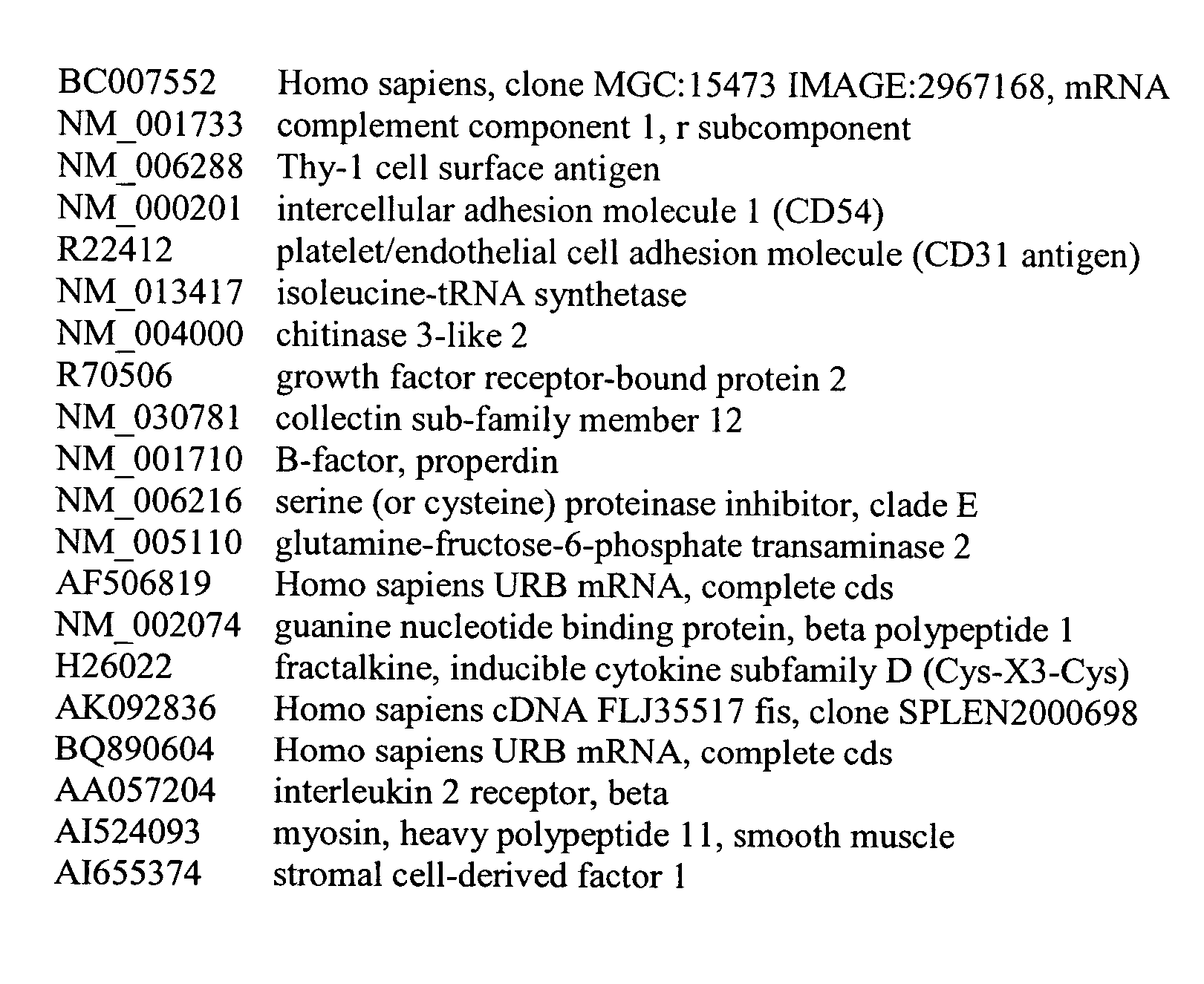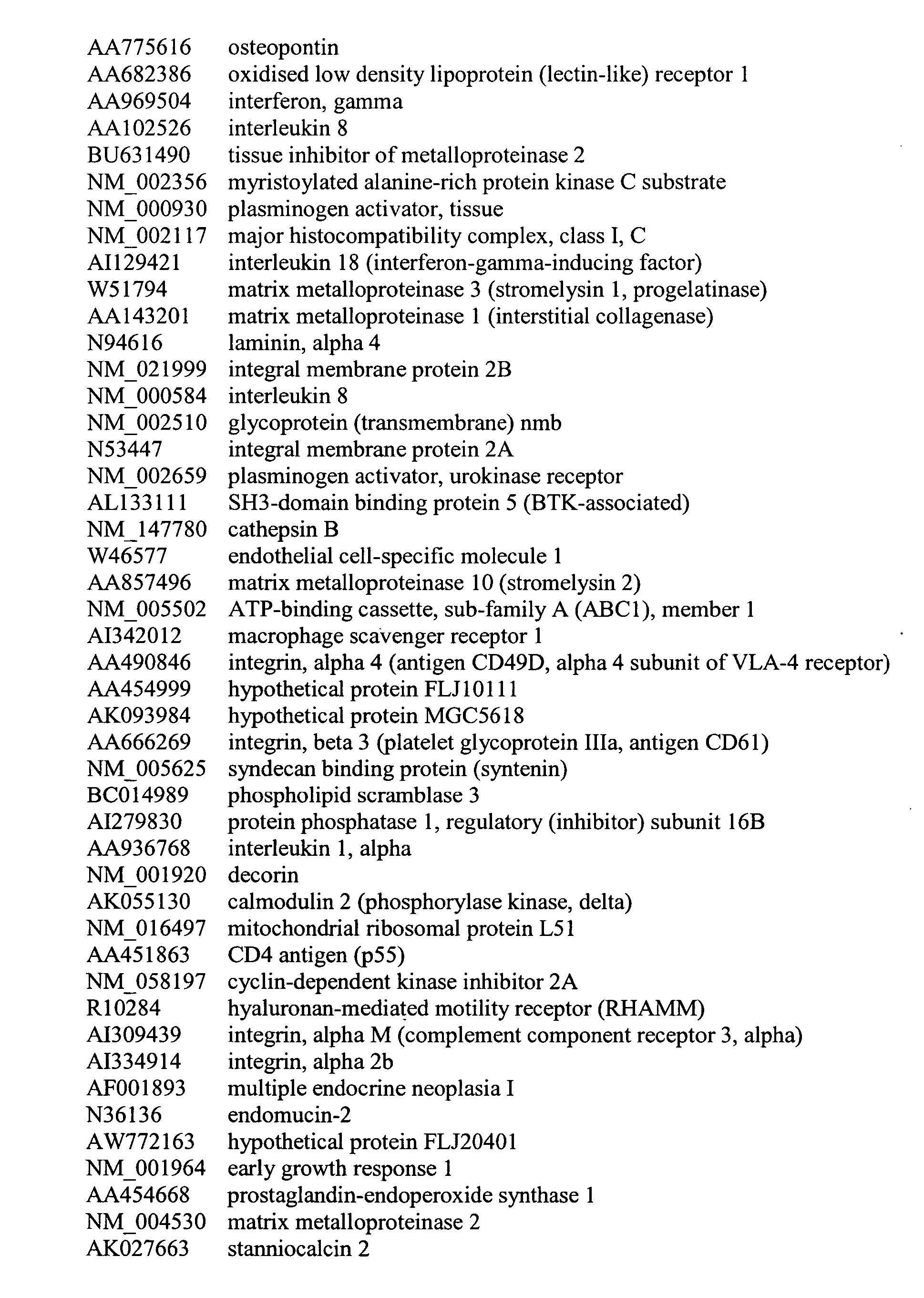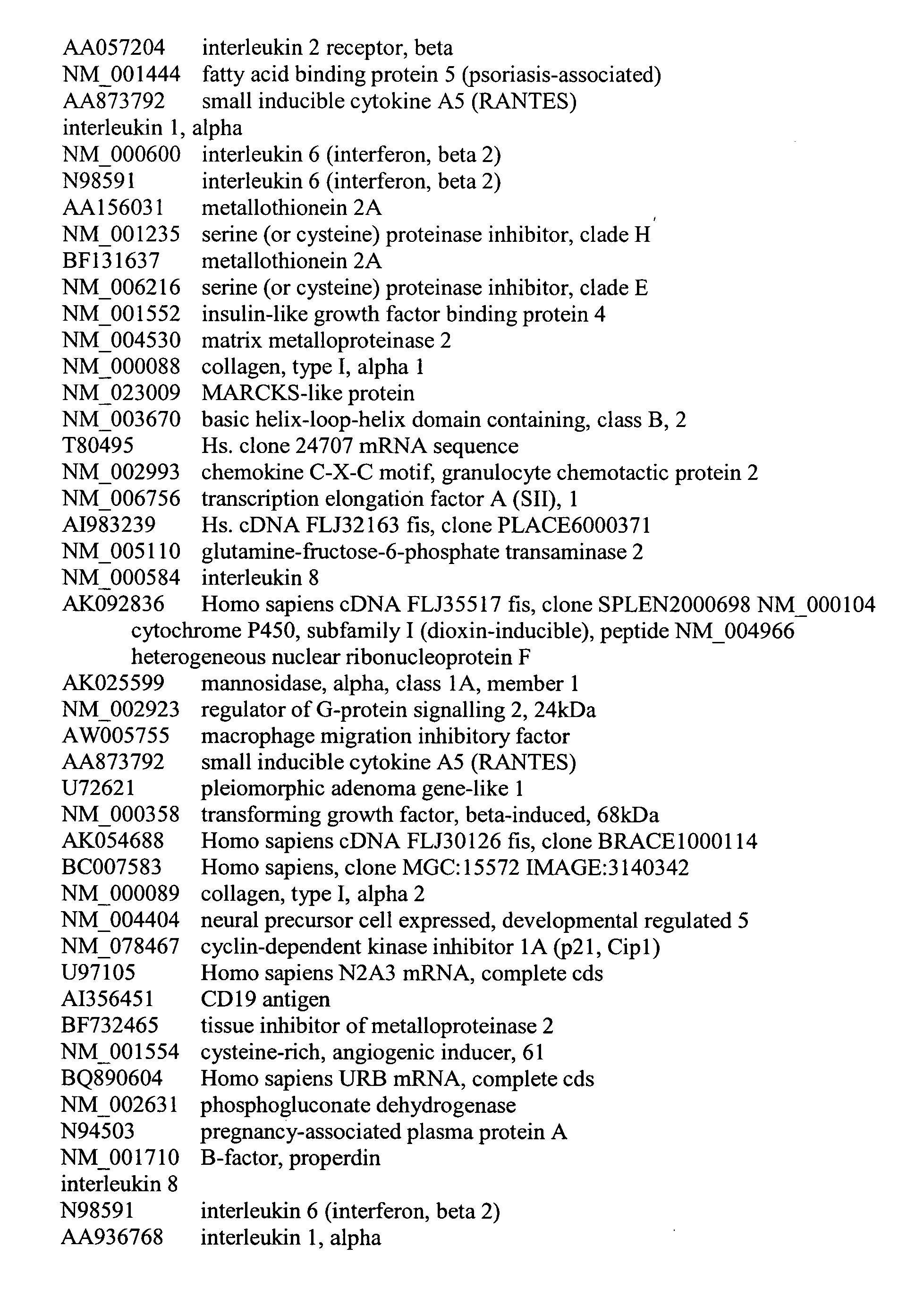Methods affecting markers in patients having vascular disease
a marker and patient technology, applied in the field of treating and monitoring vascular disease, can solve problems such as myocardial infarction, and achieve the effect of increasing binding activity and reducing binding activity
- Summary
- Abstract
- Description
- Claims
- Application Information
AI Technical Summary
Benefits of technology
Problems solved by technology
Method used
Image
Examples
example 1
[0065] A patient is selected for an atherectomy procedure because some regions in his peripheral vasculature are identified by sonographic imaging as containing possible atherosclerotic tissue. Catheters for entry into the peripheral vasculature are prepared. An aliquot of the patient's blood is withdrawn and measurements are made for the presence of the inflammatory marker CRP, the marker LPPLA2, oxidized LDL, lipids, selectin, and lipopolysaccharide (LPS). The measurements for each marker are recorded. The patient then undergoes an atherectomy procedure during which approximately 200 grams total of atherosclerotic tissue is removed from the vasculature of both legs. The tissue itself is also analyzed and found to contain plaque, fibrous tissue, lipid, some vulnerable plaque, and inflamed tissue. The tissue is then analyzed for markers including DNA, RNA, and protein markers for PDGF, PDGF receptor, FGF, VEGF, VCAM-1, and IL-6. Blood is drawn from the patient within one hour of the...
PUM
 Login to View More
Login to View More Abstract
Description
Claims
Application Information
 Login to View More
Login to View More - R&D
- Intellectual Property
- Life Sciences
- Materials
- Tech Scout
- Unparalleled Data Quality
- Higher Quality Content
- 60% Fewer Hallucinations
Browse by: Latest US Patents, China's latest patents, Technical Efficacy Thesaurus, Application Domain, Technology Topic, Popular Technical Reports.
© 2025 PatSnap. All rights reserved.Legal|Privacy policy|Modern Slavery Act Transparency Statement|Sitemap|About US| Contact US: help@patsnap.com



